That’s a wrap! A look back at 10 conservation highlights from coast to coast in 2022
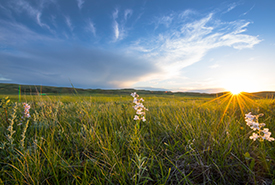
Hole in the Wall, SK (Photo by Jason Bantle)
It’s been a busy year for the Nature Conservancy of Canada (NCC), as we closed ambitious projects, care for our many conserved areas and built meaningful relationships with the communities living and working in and around NCC projects.
Thanks to the support of an incredible, growing team of donors, partners and supporters — people like you — we celebrated our 60th anniversary this past November and cast ahead to bigger and bolder goals over the next 60 years.
Here are some highlights of what you’ve helped make possible this past year:
British Columbia
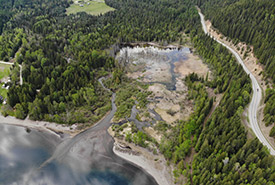
Aerial shot of Bonanza Marsh Conservation Area (Photo by Ryan Durand)
In the spring, the Alvarez family entrusted their two-hectare property on Slocan Lake to NCC after having cared for its forest and wetland habitats since the 1960s. The new conservation area encompasses the front half of Bonanza Marsh, a rich wetland that nurtures a rich diversity of wildlife and contributes significantly to the ecological health of the Slocan Lake watershed.
Learn more about Bonanza Marsh >
Alberta
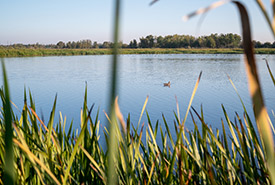
Wetland (Photo by NCC)
A new conservation site of 113 hectares north of Edmonton, named South Wakomao Shores was generously donated for conservation by the Parrent family, in honour of the late Paul Parrent, a passionate land steward. This property features a striking and varied landscape representative of Alberta’s boreal forests. It is part of NCC’s focus to protecting natural landscapes within Alberta’s aspen parkland and boreal fringe. Aspen parkland is one of the most altered ecosystems in Canada. Less than 10 per cent of this natural habitat remains intact, so conserving this area will have a large impact. This project builds on establishing a robust conservation network in the nearby Beaver Hills and surrounding areas.
Learn more about South Wakomao Shores >
Saskatchewan
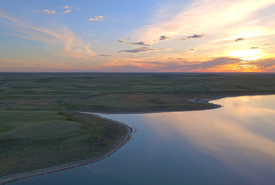
NCC's Lonetree Lake property in Saskatchewan (Photo by Gabe Dipple)
Earlier this year, a University of Regina professor creatively rallied a group of supporters to pitch in their Saskatchewan Government Insurance rebates and donate them to conservation. A total of $103,500 was raised for NCC’s Lonetree Lake project, which consists of 629 hectares of endangered grasslands and wetlands, less than two hours from Regina. Protecting grasslands will allow them to continue filtering our water, help prevent flooding and droughts, sequester carbon and provide sustenance for humans and wildlife.
Learn more about the Lonetree Lake project >
Manitoba
Lake Ranch in the Interlake region, less than an hour from Winnipeg, represents a continuous block of land containing endangered native tall grass prairie, which is being lost at a rapid pace each year. The securement of this project helps protect the area from the further loss of native tall grass prairie and provides an accessible conservation area for ecotourism opportunities and nature recreation. NCC is currently developing a property management plan, which will guide the development of recreation and ecotourism opportunities.
Learn more about Lake Ranch project >
Ontario
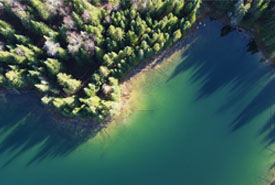
Boreal Wildlands, ON (Photo by NCC)
At nearly 1,500 square kilometres, or twice the size of Toronto, the Boreal Wildlands project harbours more than 100 lakes and 1,300 kilometres of rivers, streams and shoreline. It is also a massive carbon sink, storing 190 million tonnes of carbon, or the equivalent of the lifetime emissions of approximately three million cars. This $46-million project was closed in record time thanks to thousands of supporters, and it will leverage an innovative conservation finance program to attract more private capital, supporting critical conservation work right across Canada. Conserving this area helps prevent the release of carbon dioxide into the atmosphere and allow it to continue absorbing and storing greenhouse gasses for decades to come.
Learn more about the Boreal Wildlands project >
Quebec
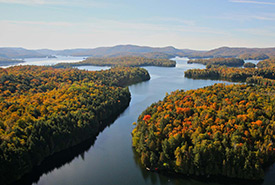
Kenauk, QC (Photo by Kenauk Nature)
An ambitious open-air lab (the largest outdoor lab of its kind in a temperate forest) at Kenauk, Quebec, which is between Ottawa and Montreal, devoted to studying the impacts of climate change, is a stellar example of how much partnership can achieve. NCC and the Kenauk Institute (KI) joined forces to ensure the protection of 25,000 exceptionally biodiverse hectares of forest and wetlands in perpetuity. Partners since 2013, the two organizations want to ensure that this incredible area is not only protected for the long term, but also dedicated to natural science and education for future generations.
New Brunswick
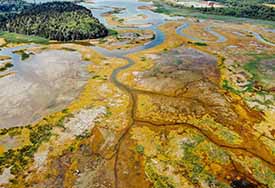
Red Head, NB (Photo By ACAP Saint John)
This past summer, NCC biologists explored urban wetlands within the city of Saint John, New Brunswick. This was a change of pace from working in natural areas, and they discovered some wildlife oases in the heart of the city!
Learn more about the urban wetlands project here >
Prince Edward Island
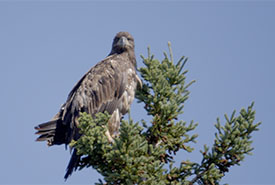
Kwesawe'k (Oulton's Island), PEI (Photo by BrainWorks Inc.)
Conservation achieved through collaboration with Indigenous Peoples is an important form of Reconciliation. Since time immemorial, the Mi’kmaq have stewarded and maintained the health of what is now called PEI. NCC and the Epekwitnewaq Mi’kmaq are taking steps that work toward this goal by conserving a culturally and ecologically significant island called Kwesawe’k, also known as Oulton’s Island, on the northwestern shore of PEI. NCC is leading efforts to secure the 85-hectare island, which features mature forests, and later transfer to the Epekwitk Assembly of Councils in five years, then the community will care for the land for the long term.
Learn about Kwesawe’k (Outlon’s Island) here >
Nova Scotia
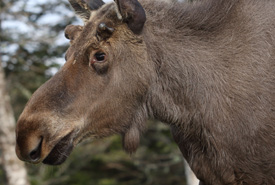
Granito, Nova Scotia (Photo by Doug van Hemessen/NCC Staff)
In August, we announced some good news for Nova Scotia’s embattled and endangered mainland moose. The new Moose Lake Nature Reserve (296 hectares) in southwestern Nova Scotia closes a gap in the surrounding 120-000 hectare Tobeatic Wilderness Area, and provides vital habitat for Nova Scotia’s endangered mainland moose. The mixed forest includes characteristic species of the original Wabanaki (Acadian) forest of the Maritimes and supports a variety of species.
Learn more about Moose Lake Nature Reserve >
Newfoundland and Labrador
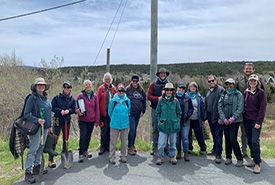
Conservation Volunteers and NL Team Planting Trees at the Torbay Gully Nature Reserve (Photo by NCC)
Sometimes a project can be as small as 0.3 hectares and still make an impact. Located close to an urban area, the Torbay Gully stands strong on its own, providing habitat for wildlife in the area. Conservation Volunteers assisted with tree planting and garbage removal here. These opportunities allow the community to connect with nature and other like-minded supporters and a chance to play an important role in expanding biodiversity in Atlantic Canada.
Learn more about Torbay Gully >
To end 2022 on a high note, during the recent UN Biodiversity Conference in Montreal (COP15), Steven Guilbeault, Canada’s minister of Environment and Climate Change, announced the extension of the Natural Heritage Conservation Program. As part of the program, over the next three years (from 2023 to 2026), NCC will conserve an additional 130,000 hectares of priority natural habitat, an area roughly three times the size of Montreal! We are looking forward to accelerating the pace and scale of our work in 2023 and beyond.
Thank you for joining us in building a thriving world.



